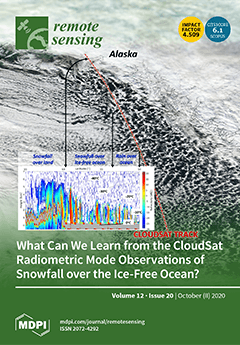More than 1100 lakes covering an area greater than 4500 km
2 are located on the Tibetan Plateau, and these lakes are important regulators of several large and famous rivers in Asia. The determination of hydrological changes that have occurred in these lakes
[...] Read more.
More than 1100 lakes covering an area greater than 4500 km
2 are located on the Tibetan Plateau, and these lakes are important regulators of several large and famous rivers in Asia. The determination of hydrological changes that have occurred in these lakes can reflect climate change and supply scientific data to plateau environmental research. Data from high frequency (moderate-resolution imaging spectro-radiometer) MODIS images, altimetry, and the Hydroweb database collected during 2000–2015 were integrated in this study to delineate the detailed hydrological changes of 15 lakes in three basins—Inner Basin, Indus Basin, and Brahmaputra Basin—on the southern Tibetan Plateau. Seven of the 10 lakes in the Inner Basin presented increasing trends with various intensities, and the increasing rates in the area of four lakes (Nam Co, Selin Co, Zhari-namco, and Ngangze) were 1.62, 28.81, 2.27, and 3.70 km
2/yr, respectively. The yearly increases in volume of the four lakes were 3.6, 9.44, 6, and 2.36 km
3, respectively. A water balance equation was established for the four lakes based on lake volume changes to illustrate the contributions of precipitation, ground runoff, evaporation, and other factors. The results revealed that surface runoff was the major contributor to expansion, and lake surface evaporation was almost 2.76–3.86 times that of lake surface precipitation. The two lakes in Indus Basin, Rakshastal and Mapam Yumco, presented a slight retreat. As a representative of Brahmaputra Basin, Yamzho Yumco underwent a retreat of –3.49 km
2/yr in area, –0.39 m/yr in level, and –0.19 km
3/yr in volume. Decreasing precipitation, increasing evaporation, and the operation of a hydrological project were the main causes of its constant retreat.
Full article





